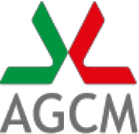ALBACOM/TELECOM ITALIA-LEASED LINES (Conclusion of the investigation)
PRESS RELEASE
On conclusion of the proceeding against Telecom Italia dealing with the supply of direct circuits, the Italian Competition Authority found that Telecom Italia's conduct constituted an abuse of dominant position and, as such, violated Section 3 of Law no. 287/90.
The Authority based its decision on the following grounds:
a) the public carrier refused to provide its rivals with sufficient, local transmission capacity so that they could meet their service needs;
b) Telecom Italia supplied circuits at speed higher than 2-Mbps exclusively to its own customers;
c) Telecom Italia offered the use of ISDN D channel packet service to its customers without having implemented a specific tariff structure and informed competitors adequately.
Considering the seriousness of the infringement concerning the supply of the ISDN D channel, the Authority ordered Telecom Italia to pay an administrative fine for an amount of 950 million lire.
During the investigation initiated following a complaint filed by Albacom (a joint-venture created by British Telecommunications and BNL, who owns and runs a data transmission private network in Italy), it emerged that - in relation to the supply of urban lease line circuits at speeds from 64 Kbps to 2 Mbps - Telecom Italia impeded competitors to utilize sufficient, local transmission capacity in order to fulfill their needs. As a consequence of the prevention, access of competitors to the market was hampered.
With respect to circuits at speed higher than 2-Mbps, the Authority found that Telecom Italia provided exclusively its own customers with these circuits and did not publicize adequately the availability of leased lines, in such a way as to discriminate competitors.
In addition, Telecom Italia was able to use the ISDN D channel packet service as a transmission technology alternative to direct circuits to offer less costly liberalized data transmission services. At the same time, Telecom Italia did not inform in any way competitors about the opportunity to utilize ISDN D channel and provide their customers with the same services. This conduct caused substantial prejudice to other operators because of the immediate competitive advantage enjoyed by the dominant firm.
Lastly, with regard to the onerousness of the current tariffs, the international comparison, which was necessary for the absence of data on costs of circuits, showed that tariffs on lease direct circuits imposed in Italy are higher than those currently applied in the principal European countries, mainly those dealing with lines needed to Telecom Italia's competitors to implement their telecommunications networks.
In the course of the investigation, Telecom Italia formally assumed certain commitments aimed at removing the anticompetitive effects of its conduct as well as, within the limits of its own autonomy, improving competitive conditions by intervening in the current tariff structure.
First, Telecom Italia undertook to reserve special tariffs on leased lines for competitors so that they can access, with the conditions enjoyed by the public carrier being equal, the telecommunications infrastructures needed to install their own networks. Rate reductions which Telecom Italia undertook to apply to authorized operators deal with interurban circuits at 2-Mbps speed (as well as those at multiple speed) and vary from 35 per cent min. to 60 per cent max., depending on the level of consumption, whereas a 10 per cent reduction regards interurban circuits at speed lower than 2-Mbps (64 Kbps and nx64Kbps), independently of the expense incurred.
Second, Telecom Italia committed to introduce decrescent proportional tariffs on intermediate-capacity urban connections. Rate reductions are applied starting from the 1997 last quarter and are valid for 1998, different decisions of the future regulating Agency excepted.
Further, Telecom undertook in the future to publicize adequately and in advance the availability of new direct connections or substitutive transmission technologies and offer them to telecommunications operators. By June 1998, the Authority will inform the Authority of the detailed and certified allotment of costs of lease direct circuits.
Taking into account the above commitments and the measures Telecom Italia took to change its conduct, the Authority ordered the telecoms monopolist to submit a report on the effects produced by such commitments, within 120 days of receiving notification.

